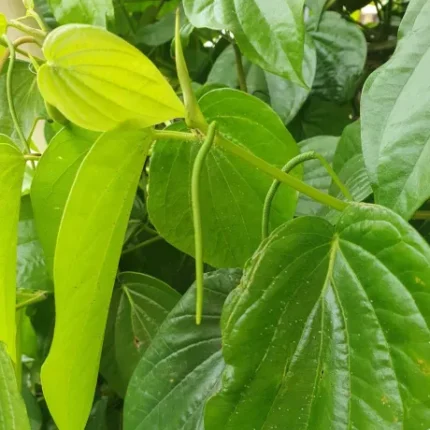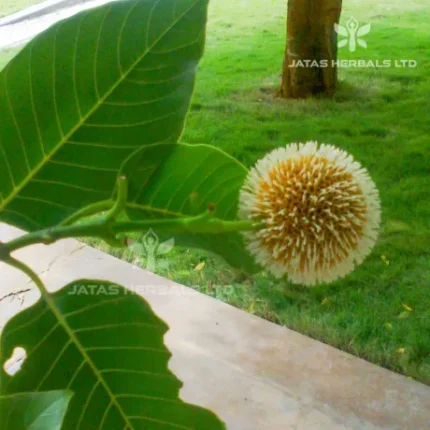Caraka indicated it for the treatment/management of PŒÄÎu and GrahaĶ mainly. Asokarohini of Brihat Trayi (C.S.Su. 4/48; S.S.Su. 42/18 & A.H.Ut. 2/47) is believed to be a climber having leaves like those of Aüoka. Which is identified with Erycibe tomentosa Roxb. It may be the other variety of Katuki mentioned as Rohini by Sodhala later.
Ullaka, of Vagbhata(A.H.Ci. 8/149) may be the synonym of either Katuka or Latakasturi. The names Katuka and Katuka rohini are used for majority of times in the Brihat Trayi works. Katvi is the synonym mentioned by Sushruta and Vagbhata for a limited number of times.
Tiktarohini and Tikta are the names which are befitting to the herb P. Kurroa owing to its bitter taste.
Tikta dvaya mentioned by Vagbhata (A.H.Su. 15/40) are TiktŒ and Kœka Tikta. Sushruta earlier quoted Katurohini and Sarngestha in the place of these two herbs (S.S.Su. 38/54). Both are mentioned in the context of Mustadi gana. Therefore Kakatikta and Sargesta appear to be the synonyms of same plant which is identified by many as Physalis minima Linn. Or Cardiospermum helicacabum Linn. (Preferably the Rater one).
Sarnghdara quoted it as the example for Bhedana drugs. It is proved to be an I choleretic agent and hepatoprotective agent. Picroliv in the component patented by CDRI, Lucknow.
Different Varieties–
There are two varieties described in the Nighantu works viz., Katuka rohini (P. Kurroa) and Asokarohini (E. tomentosa).
Botanical Description–
A hairy herb with perennial bitter rootstock. Leaves– subradical, spathulate, serrate. Flowers– in many-flowered ighant. Flowering branch longer than the leaves. Fruits– Ovoid, capsules. Flowering and fruiting occur between October-December.
Distribution– Found in alpine Himalayas at 3000-5000 m.
Major Chemical Constituents–
D-mannitol, Kutkiol, Kutkisterol, apocyanin; phenol gluco-sides; androsim and picein iridoid glycosides; kutkin, picroside I, II & III; Kutkoside, minecoside, picrorhizin, arvenin III etc.
Part Used– Root, underground stem (Rhizome & roots)
Dosage– Powder 0.5-1 g (therapeutic) and 3-6 g (purgative)
Research–
(1) Hepato protective activity is noticed with decoction against CCl4-induced hepatotoxicity in rats (Chaturvedi & Singh, 1965).
(2) Alcoholic extract showed protection against CCl4-induced hepatotoxicity. Marked regression of SGOT, SGPT & alkaline phosphatase levels are noticed (Pandey & Chaturvedi, 1968).
(3) Water soluble fraction of 90% alcoholic extract exhibited smooth muscle relaxant laxative (in rats) and choleretic (indogs) activities (Das & Raina 1967).
(4) Rats treated with alcoholic PE and chloroform extracts regressed the transaminases levels even when subjected to CCl4-induced liver injury (Pandey & Chaturvedi, 1969).
(5) The alcoholic extract showed a hydrocholeretic action with a simultaneous fall in the concentration of biliary bilirubin, cholesterol and alkaline phosphatase in dogs (Pandey & Chaturvedi, 1970).
(6) Apocyanin showed choleretic action in the dog and also produced a moderate to marked relaxation of rabbit ileum (Basu et al., 1971).
(7) Ethanolic extract exhibited marked hydrocholeretic activity in anaesthetized dogs (Vohora et al., 1972).
(8) The 50% ethanolic extract revealed diuretic activity in rats (Dhar et al., 1973).
(9) Kutkin as well as two acids (Cinnamic & vanillic) showed significant choleretic and laxative activities. Kutkin and vanillic acid were relatively more potent than cinnamic acid (Das et al., 1976).
(10) The aqueous extract showed moderate antibacterial activity against Staph. Aureus and Sal. Typhi and marked inhibition against Esch. Coli (Vohora et al., 1972).
(11) P. Kurroa has also been claimed to have led to beneficial results in the management of bronchial asthma (Rajaram, 1976).
(12) P. Kurroa and Cichorium intybus extracts showed almost equal beneficial effects against chlorpromazine-induced hepatic injury in rats (Pandey, 1980).
(13) The alcoholic extract reversed the altered activities of Na+ K+ AT Pase in animals subjected to hepatic injury by paracetamol and aflatoxin (Mogre et al, 1981).
(14) In a clinical study an 20 patients of bronchial asthma, P. Kurroa showed significant improvement in reducing the frequency and severity of asthmatic attacks (Yegnanarayanan et al., 1982).
(15) Root and rhizoones extract exhibited hepatoprotective activity in rat and mostomys. Active principle identified as Kutkin and Kutkin-free fraction found to be devoid of any ighantu (I.J.M.R. 1988, 87, 401).
(16) Plant extract suppressed inflammatory oedema at 1 hr, 3 hr and 5 hr post-insult in rats. Macrophage depletion in animals did not affect anti-inflammatory effect of the extract (Ind. J. Physiol. Pharmacol. 1988, 32, 289).
(17) Alcoholic extract of roots exhibited anti-inflammatory activity in adjuvant-induced and formaldehyde arthritis in rats and mice (Phytother. Res. 1993, 7, 402).
(18) Testing of picroliv (a standardized fraction of alcoholic extract of plant) and its major components picroside I, Catapol, Kutkoside I and Kutcoside for antihepatitis B virus surface antigen (anti-HBr.)– like activity, showed promising activity in picroliv and catalpol (IJMR, 1990, 92, 133).
(19) Administration of picroliv (3.0 to 12.0 mg Kg/day for 2 weeks) provided significant protection against viral hepatic damage (IJMR 1990, 34, 92).
(20) Anti-inflammatory activity of Kutkin is reported (Phytothe. Res. 1993, 7, 402).







Reviews
There are no reviews yet.